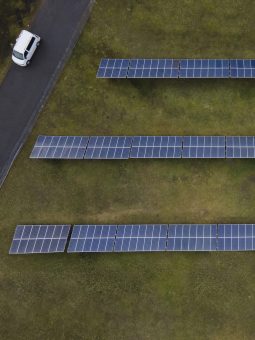
After four years of soaring growth, the EU solar sector has hit its first deployment slowdown of the 2020s, dropping from 53 percent growth in 2023 to 4 percent in 2024. This represents a 92 percent slowdown of solar growth.
SolarPower Europe’s annual EU Market Outlook for Solar Power reveals that 65.5 GW of solar has been installed in 2024, just beating the 2023 record of 62.8 GW of new solar. The total EU solar fleet now stands at 338 GW, quadrupling from 82 GW a decade ago.
Walburga Hemetsberger, CEO at SolarPower Europe, said, “European policymakers and system operators can consider this year’s report a yellow card. Slowing solar deployment means slowing the continent’s goals on energy security, competitiveness and climate. Europe needs to be installing around 70 GW annually to hit its 2030 targets – we need to consider corrective action now, before it’s too late.”
The slowdown comes despite falling solar component prices and lower upfront costs for solar installations. Ground-mounted utility-scale solar projects saw an average cost decline of 28 percent in 2024. Despite the lower cost of capital, solar investment fell for the first time in the 2020s, from €63 billion in 2023 to €55 billion in 2024.
On rooftops, the report credits limited growth to the temporary resolution of the gas crisis. Households with solar and a heat pump saved up to 84 percent on their monthly energy bills during the height of the energy crisis – with less pressure on monthly energy bills for now, households are less inclined to invest in solar panels. Therefore, larger solar installations are likely to grow quicker than rooftop in the EU in the second half of the decade. However, with rooftop installations starting from a larger base, they will hold a greater share of the EU’s total solar through the decade, compared to utility scale.
More:
- How Did Pakistan Experience a „Solar Boom”?
- Turkey Launches the Largest Platform for Industrial Decarbonization Investments
- A New Guide Reveals the Benefits of Agrisolar for Farmers
More widely, the market slowdown is attributed to system conditions. Europe’s electrification rate has been stuck at 23 percent for the past five years, leaving most of the energy system dependent on fossil fuels and combustion. The Electrification Alliance is calling for 35 percent electrification by 2030.
At the same time, system flexibility must work quickly to catch up to solar deployment. A flexible, electrified system will slash 2030 day-ahead energy prices by 25 percent, while boosting the solar business case by 71 percent. Amongst other flexibility tools, this will require a 16-fold growth from 48 GWh of EU battery storage today to 780 GWh of battery storage in 2030.
Dries Acke, Deputy CEO at SolarPower Europe (he/him) said: “Low-cost solar is the best option for bringing Europe into a new era of competitiveness. We need to complete our detachment from Russian gas and avoid LNG dependence. Europe’s industries needs clean and affordable electricity to stay competitive, and Europe’s renewable sector needs more flexible electricity demand to reinforce their business case. We call on the new European Commission to leverage this mutually reinforcing opportunity and build the Clean Industrial Deal around renewables, flexibility and electrification.”
Looking forward, the future looks less bright than previously forecast. By 2028, the sector could be installing 82 GW per year, with annual growth only in the 1-digit range of 3-7 percent. By 2030, the most-likely ‘medium’ scenario forecasts 816 GW total solar capacity in the EU, that’s 8 percent down from our estimate of 890 GW only six months ago. Furthermore, for the first time, our ‘low’ scenario for 2030 warns that Europe could miss its REPowerEU target of 750 GW, and achieve only 650 GW.
Source: SolarPower Europe



